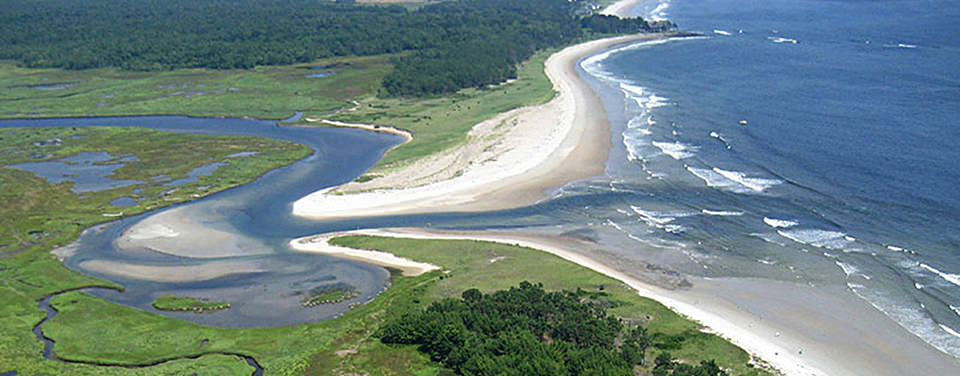Summary of physical oceanography lecture on april 7th, 2017 about Estuary
In terms of physical oceanography, estuary is a part of water found where river meet the sea. In other words, estuary is an area where water from the river and the sea are mixed, so it has unique plants and animal ecosystem living in the mixture of both salty and fresh waters. An estuary is divided into three parts, upper estuary, middle estuary, and lower estuary. Upper estuary is a part where the freshwater is dominant and it is a limit area for tide to flood. Middle estuary is where you could find the salt water and fresh water start to mix. Salt water from the sea will be dominant over the freshwater in lower estuary area.
Estuaries are classified based on its morphological form or its salinity circulation. An estuary based on morphological from is classified into wave dominated estuary or tide dominated estuary. A wave-dominated estuary caused by erosion and sediment transport which form a barrier narrowing the mouth of the estuary and preventing tide’s role. A tide dominated estuary could be either a macro-tidal or a hypersynchronous estuary. A macro-tidal estuary occurs when there are 4-6 m tides which would mix and transport the sediment on an estuary. On the other hand, a hypersynchronous estuary occurs when tide height is increased to the funnel and the convergence exceeds friction. Furthermore, an estuary based on its salinity circulation is classified into salt-wedge, well-mixed, and partially mixed estuary. A salt-wedge estuary occurs when waters from the river are dominant over the sea water and tide is less impact on the estuary causing denser sea water forming a wedge-shaped layer. A partially mixed estuary occurs when tidal force increases causing all water column to mix which the salinity varies creating a moderately stratified condition. A well-mixed estuary occurs when tidal mixing forces exceed river output, resulting in a well-mixed water column and the disappearance of the vertical salinity gradient.







0 Komentar:
Posting Komentar